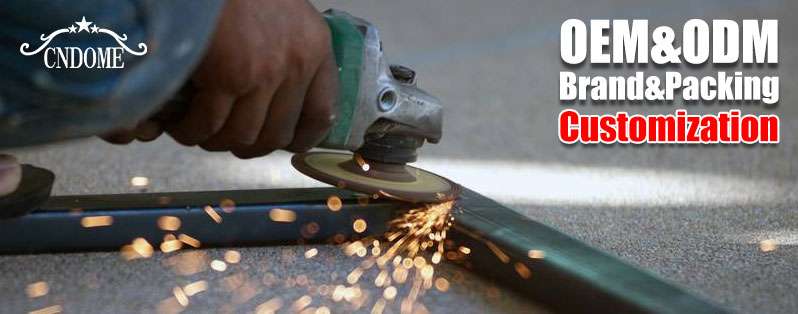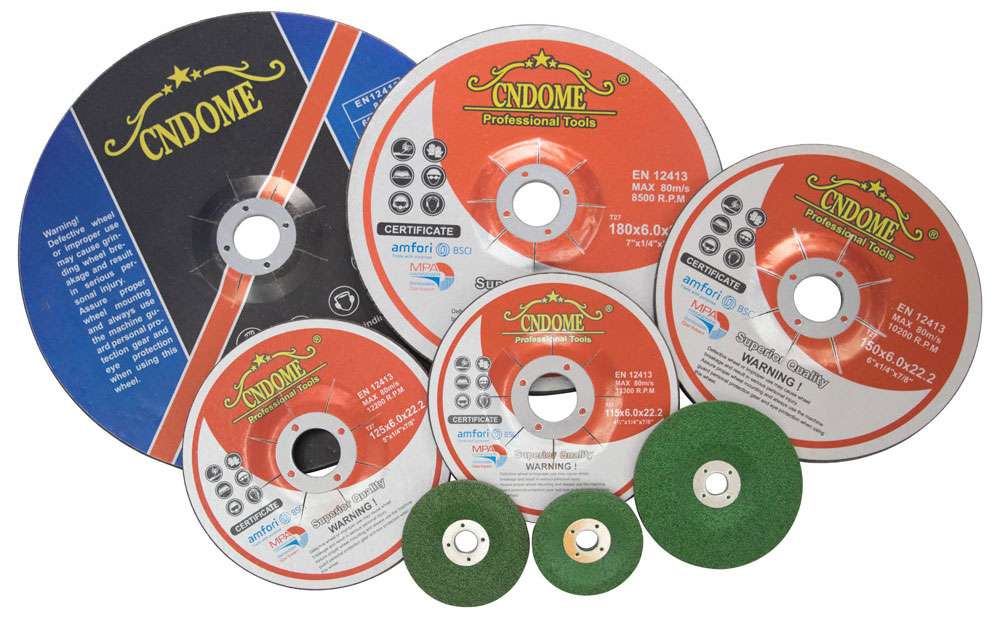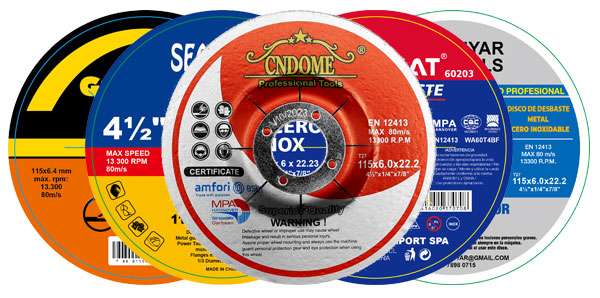Abrasive wheels are essential tools used in a variety of industries for cutting, grinding, polishing, and finishing metals, ceramics, and other materials. Whether you’re working with a power tool or in a heavy-duty industrial setting, understanding the basics of abrasive wheels can help ensure safety and optimal performance. In this blog, we’ll cover the key aspects of abrasive wheels that everyone should know.
What Are Abrasive Wheels?
Abrasive wheels are made of a composite material, consisting of a bonding agent and abrasive particles. The abrasive particles are the grinding agents that perform the cutting or grinding action, while the bonding agent holds them together. These wheels are mounted on power tools such as grinders, cut-off saws, and polishers to help achieve specific tasks like shaping or smoothing materials.
Types of Abrasive Wheels
There are several different types of abrasive wheels, each designed for specific applications:
- Grinding Wheels: Used for grinding, deburring, and sharpening tasks. They come in various sizes, from small hand-held versions to larger wheels for industrial machines.
- Cutting Wheels: These are thin and used specifically for cutting metal, concrete, and other tough materials. Their sharp edges make them ideal for fast, clean cuts.
- Flap Discs: These versatile wheels are used for grinding and finishing. They consist of overlapping abrasive flaps that provide a smoother finish with less dust.
- Wire Wheels: Made of steel wire, these are used for cleaning, removing rust, or finishing surfaces.
- Polishing and Buffing Wheels: These softer wheels are typically used with polishing compounds to give a smooth, shiny finish to surfaces.
Understanding Wheel Grains and Grit
The grit size of an abrasive wheel refers to the coarseness or fineness of the abrasive particles. It’s an important factor in determining how quickly the wheel will cut or grind a material:
- Coarse Grit (40-60): These wheels are best for removing material quickly, such as during heavy grinding or shaping tasks.
- Medium Grit (80-120): A good all-purpose grit for general grinding and finishing.
- Fine Grit (150-220): Used for polishing and achieving a smooth, refined finish.
- Very Fine Grit (320 and higher): Ideal for ultra-smooth finishes and polishing.
Bonding Materials
The bond holds the abrasive particles together, and there are different types based on the intended application:
- Vitrified Bond: These are commonly used in heavy-duty industrial settings and provide a very durable and rigid structure.
- Resinoid Bond: Offers more flexibility and is often used for cutting and grinding applications.
- Rubber Bond: These are flexible and often used for polishing and deburring applications.
Selecting the Right Wheel
When selecting an abrasive wheel, consider the following factors:
- Material Being Worked On: Some wheels are designed specifically for certain materials, such as metals, ceramics, or composites. Choose a wheel that matches the material for efficient and safe operation.
- Wheel Size: The size of the wheel determines how much material can be worked at once. For large tasks, a bigger wheel is necessary, while smaller wheels are used for fine, detailed work.
- Speed: Check the maximum operating speed of the wheel to ensure it matches the speed of your power tool. Over-speeding a wheel can be dangerous.
- Grit and Bond: Depending on the finish required, choose the appropriate grit and bonding material for the job.
Safety Tips for Using Abrasive Wheels
Using abrasive wheels can be dangerous if safety precautions aren’t followed. Here are some key safety tips:
- Inspect the Wheel: Always check the wheel for cracks, chips, or damage before use. Do not use a damaged wheel.
- Use Proper PPE: Always wear safety glasses, gloves, and a face shield to protect against flying debris and sparks.
- Secure the Workpiece: Ensure that the material being worked on is securely clamped to prevent any sudden movements.
- Follow Manufacturer Guidelines: Adhere to the speed ratings, mounting instructions, and other guidelines provided by the wheel manufacturer.
Maintaining Abrasive Wheels
Regular maintenance can extend the life of your abrasive wheels and ensure optimal performance:
- Dressing the Wheel: This process involves removing the worn or clogged surface of the grinding wheel to restore its cutting ability.
- Proper Storage: Store wheels in a dry, cool place to prevent damage from environmental factors like moisture or extreme temperatures.
- Proper Mounting: Ensure that the wheel is properly mounted on the machine and that the flange and spindle are clean and in good condition.
Conclusion
Abrasive wheels are powerful tools used across a wide range of industries for various tasks. Understanding their types, functions, and safe usage is critical for achieving quality results and ensuring safety. Whether you’re a DIY enthusiast or a professional, always take time to select the right abrasive wheel for the job and follow safety guidelines for optimal performance.
Online Message
Minimum Order Quantity: 5,000 Pcs, 10 Pcs Free Samples.
Contact Us For More Information!
Tel/WhatsApp
+86 18796960868
DomeGrinding@hotmail.com
Address



